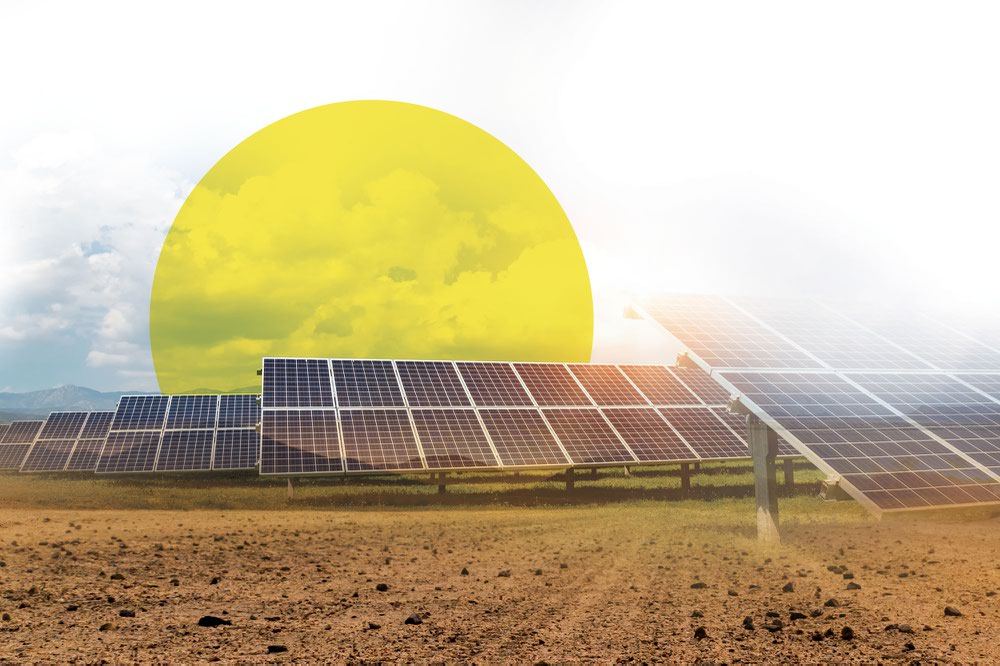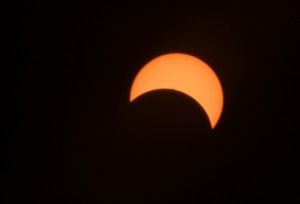If you’ve been living under a rock like a desert tortoise, you might have missed that Nevada is part of a federal plan to reduce carbon emissions and fight climate change by transitioning to a 100% renewable energy power grid by 2035. The nationwide goal was set by the Biden-Harris administration and bolstered by Congress’ Energy Act in 2020, which calls for permitting 25,000 megawatts of solar, wind and geothermal energy projects by 2025.
With about 80% of the land in Nevada federally managed—and its obvious desert climate—the state is a prime site for renewable energy developments. And while renewable energy is an important part of the climate change puzzle, residents near established and potential sites have sounded an alarm on negative impacts.
After hearing concerns from Pahrump residents, the Nye County Board of Commissioners sent a letter to the Clark County Board of Commissioners in January asking them to consider the “peril Nye County’s largest community faces” and reject any solar project applications that would affect the Pahrump Hydrographic Basin, the town’s main groundwater source.
Nye County already has taken issue with water use for the construction of the 3,000-acre, 500-megawatt Yellow Pine solar project in Clark County, 10 miles southeast of Pahrump. According to officials, a pending application for the 2,400-acre Rough Hat Clark solar project could further affect the Pahrump Valley’s groundwater supply. And Nye County has no authority regarding solar development in Clark County along the Nye County border.
“We do not have development agreements with these two projects, so [Nye] County and [the] community have no direct financial benefit. They could also have a detrimental impact on our infrastructure and emergency services,” Nye County commissioner Debra Strickland said in a statement to the Weekly. “Another concern is the placement of solar fields and how to best mitigate any negative impacts on the environment, current trail routes or the future of outdoor recreation.
“Nye County must be part of the discussion regarding solar projects within our county, even on state and federal-managed lands.”
Clark County officials had no comment on Nye County’s request to deny or re-site solar applications within the Pahrump Hydrographic Basin.
Candela Renewables, the developer of the proposed 400-megawatt Rough Hat Clark project, says the project’s need for water would be only temporary.
“The water needed for the Rough Hat Clark Solar Project is a short-term, temporary use primarily for dust control during construction. The water would be purchased from an existing allocation, meaning that the project would not be a new source of water withdrawal from the basin,” CEO Brian Kunz said in a statement to the Weekly. “Once the project begins operation, water needs drop significantly and are mainly for sanitation for the operations crew. Panel washing is infrequently, if ever, needed.”
THE WESTERN SOLAR PLAN
Leaders and residents of Nye County aren’t the only folks sounding an alarm on utility-scale solar development. Conservationists are concerned about the impacts it has on natural landscapes, plants and wildlife.
Kevin Emmerich, former park ranger and co-founder of the conservation watch group Basin and Range Watch, says solar has been developing rapidly in Nevada and transforming the landscape for more than a decade.
“Right around 2009, under the Obama administration, was the first land rush to put a lot of large-scale green energy on public lands. We took a look at the map ... and just about all of the public lands had some sort of solar application on them,” Emmerich says.
During the Biden-Harris administration alone, 47 renewable energy projects have gone forward nationwide, adding 11,236 megawatts of clean energy to the grid, or enough to power more than 3.5 million homes, according to the Bureau of Land Management (BLM).
And Nevada’s landscape is expected to change even more. The BLM in January announced it is advancing four new renewable energy projects in the state, including the proposed Rough Hat Clark project and the proposed 1,635-acre, 200-megawatt Dry Lake East solar project 10 miles northeast of Las Vegas.
Also in January, the BLM announced it’s updating the roadmap for solar energy development across the West. Originally created during the Obama administration in 2012, the Western Solar Plan has been that roadmap for a dozen years. The new proposed updated plan expands to 11 states (Arizona, California, Colorado, Idaho, Nevada, New Mexico, Montana, Oregon, Utah, Washington and Wyoming).
The agency has proposed five alternatives that vary in the amount of public land that would be opened up to renewable energy development. The most extreme alternative would make 55 million acres available, while the least extreme alternative would make 8.4 million acres available.
Under the BLM’s “preferred alternative,” 22 million acres would be made available to utility-scale solar development across the 11 states. Of those 22 million acres, an estimated 700,000 acres would be needed to meet energy goals set by the Department of Energy.
“The problem with the plan is that it has a really big political mandate to approve something like 700,000 acres of additional solar on public lands. That’s about 1,000 square miles, and we think that’s a lot,” Emmerich says.
He adds that he understands the urgency of cutting emissions and addressing climate change, but the development of renewable energy is coming at the expense of the natural environment.
“We noticed a lot of green groups were really conflicted on this issue because they’re worried about climate change. And we have to do something about that. But, we have always felt … that green energy needs to go on more disturbed lands and rooftops.”
Patrick Donnelly, Great Basin director for the Center for Biological Diversity, says the draft plan doesn’t include enough protection for sensitive ecosystems found in Nevada’s public lands.
“Across all five alternatives is this set of ‘exclusion zones.’ And the exclusion zones … largely consist of previous designations … national monuments, national conservation areas … places that already can’t have solar,” he says. “So the exclusion zones aren’t actually protecting anything, because they’re almost all places where solar can’t be built right now.
“They are leaving all sorts of sensitive ecosystems on the table for solar. Most of the wild lands of Southern Nevada that aren’t already a park or a wilderness are targeted for development.”
The BLM claims the draft updated Western Solar Plan directs development to areas that have “fewer sensitive resources, less conflict with other uses of public lands, and close proximity to transmission lines.”
The BLM used $4.3 million from the Inflation Reduction Act to invest in the updates to the Western Solar Plan. “This investment is helping improve the solar development application process by providing developers with better predictability, while also maintaining sufficient flexibility to address site-specific resource considerations,” reads a statement from the agency.
Donnelly says he believes there is a way forward with solar, but it’s going to take a “drastically different approach.”
“There is a way forward, and I think many of us working on this do support some amount of public land for solar, if it’s done in the right way, in the right places,” he says.
The BLM said in a statement to the Weekly, “Although the Western Solar Plan does not evaluate project-specific impacts from individual proposals, the BLM will require that the appropriate project-specific reviews and robust public and tribal engagement are performed on each solar application the agency receives.”
The proposed update to the Western Solar Plan, officially called the “Draft Programmatic Environmental Impact Statement for Utility-Scale Solar Energy Development,” is open for public comment on the BLM’s website through April 18. A final version of the plan is expected by late 2024.
Click HERE to subscribe for free to the Weekly Fix, the digital edition of Las Vegas Weekly! Stay up to date with the latest on Las Vegas concerts, shows, restaurants, bars and more, sent directly to your inbox!





